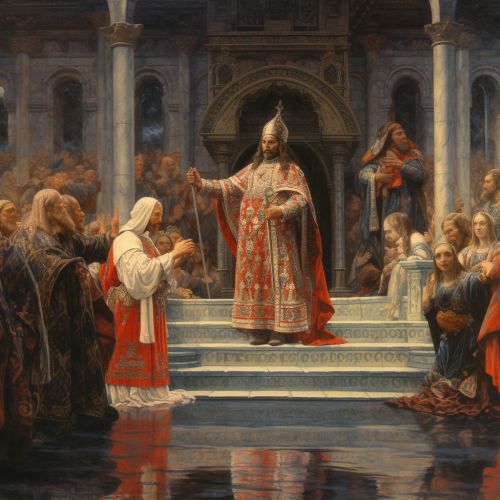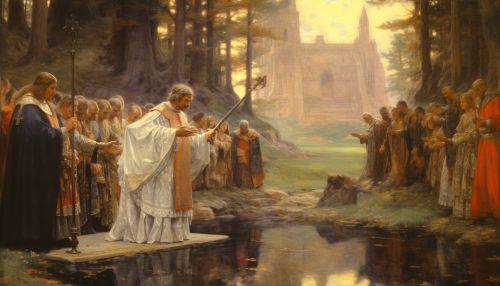Baptism of Poland
Historical Background
The Baptism of Poland refers to the event in 966 AD when Mieszko I, ruler of the Polans, was baptized as a Christian and subsequently established the Polish Church. This event marked the beginning of Poland's historical journey as a Christian nation, and the integration of Poland into the cultural community of Western Europe.


Mieszko I and the Polans
Before the baptism, the Polans, a West Slavic tribe, were the dominant group in what is now Poland. They were ruled by Mieszko I, who was the first historical ruler of Poland. Mieszko was a pagan, like his subjects, and his realm was characterized by various Slavic pagan beliefs and practices. However, the political landscape of Europe was changing rapidly, and Mieszko saw the need to align his realm with the more powerful Christian kingdoms of Western Europe.
The Baptism
The exact circumstances surrounding the baptism of Mieszko I are not entirely clear. It is generally believed that Mieszko was baptized by a missionary from Bohemia, although other theories suggest that the baptism may have been performed by a bishop from the German state of Saxony. Regardless of the exact details, it is clear that Mieszko's baptism was a significant event that marked the beginning of the Christianization of Poland.
Aftermath and Significance
The baptism of Mieszko I had far-reaching implications for the future of Poland. It marked the beginning of Poland's integration into the Christian community of Western Europe, and it also marked the beginning of the end of paganism in Poland. The baptism led to the establishment of the Polish Church, which played a crucial role in the development of Polish culture and identity.
